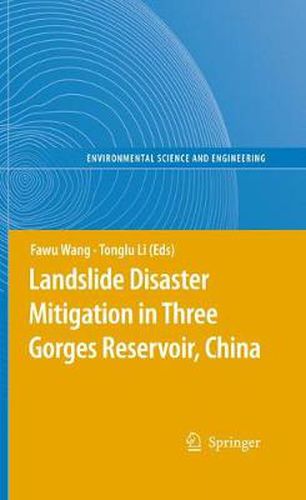Readings Newsletter
Become a Readings Member to make your shopping experience even easier.
Sign in or sign up for free!
You’re not far away from qualifying for FREE standard shipping within Australia
You’ve qualified for FREE standard shipping within Australia
The cart is loading…






The purpose of the Three Gorges project is to construct a large dam, forming a large-scale water reservoir in the valley. When the ?nal design reservoir water level is reached, the length of the reservoir will be longer than 660 km, which extends from the dam site at Sandouping town to Maoer-Xia Gorge in Chongqing City. The reservoir crosses the low-medium mountainous area consisting of the fold zone from Sinian system to Mesozoic Erathem, which is distributed in Hubei Province, HunanProvince,YunnanProvinceandChongqingCity,tothelowmountainousarea formed by the fold zone ranging from the Triassic to the Jurassic Periods, which is distributed in the eastern part of Chongqing City. Generally, the reservoir area can be divided into two parts. The eastern part is from Sandouping town to Baidicheng in Fengjie County, with a length of 160 km. In this part, three portions consisting of limestone formed the narrow Three Gorges. Between the Three Gorges are two portions consisting of clastic rocks forming wide valleys. At the dam site are the Pre-Sinian System crystal rocks. In the Three Gorges parts, thick bulk limestone anddolomitearemainlydistributed,sandwichingthinlayersof sandstoneandshale. The mountain height at the gorge areas is about 600-1,200 m, and the width at thoseareasis only200-300m. Thegeomorphologycharacterizedby high mountains and deep valleys formed the famous three gorges, namely, Qutang Gorge in the west, Wu Gorge in the middle, and Xiling Gorge in the east. The Xiling Gorge is divided into eastern part and western part.
$9.00 standard shipping within Australia
FREE standard shipping within Australia for orders over $100.00
Express & International shipping calculated at checkout
The purpose of the Three Gorges project is to construct a large dam, forming a large-scale water reservoir in the valley. When the ?nal design reservoir water level is reached, the length of the reservoir will be longer than 660 km, which extends from the dam site at Sandouping town to Maoer-Xia Gorge in Chongqing City. The reservoir crosses the low-medium mountainous area consisting of the fold zone from Sinian system to Mesozoic Erathem, which is distributed in Hubei Province, HunanProvince,YunnanProvinceandChongqingCity,tothelowmountainousarea formed by the fold zone ranging from the Triassic to the Jurassic Periods, which is distributed in the eastern part of Chongqing City. Generally, the reservoir area can be divided into two parts. The eastern part is from Sandouping town to Baidicheng in Fengjie County, with a length of 160 km. In this part, three portions consisting of limestone formed the narrow Three Gorges. Between the Three Gorges are two portions consisting of clastic rocks forming wide valleys. At the dam site are the Pre-Sinian System crystal rocks. In the Three Gorges parts, thick bulk limestone anddolomitearemainlydistributed,sandwichingthinlayersof sandstoneandshale. The mountain height at the gorge areas is about 600-1,200 m, and the width at thoseareasis only200-300m. Thegeomorphologycharacterizedby high mountains and deep valleys formed the famous three gorges, namely, Qutang Gorge in the west, Wu Gorge in the middle, and Xiling Gorge in the east. The Xiling Gorge is divided into eastern part and western part.